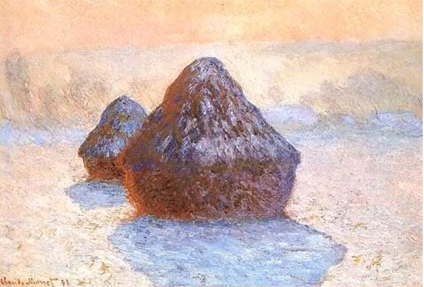CLAUDE Monet may have been a great painter, but he was lousy company if you happened to be suf-fering from a terminal illness. ''Colour is my day-long obsession, joy and torment,'' he once remarked to Georges Clemenceau, author of one of the earliest books about the artist. ''To such an extent indeed that one day, finding myself at the deathbed of a woman who had been and still was very dear to me, I caught myself in the act of focusing on her temples and automatically analysing the succession of appropriately graded colours which death was imposing on her motionless face.''
Artists create their own myths, and Monet contributed substantially to the idea that he was essentially a conveyor of empirical truths - a painter whose work, rooted in dispassionate observation, was perfectly at-tuned to the rational, positivist attitudes of the later nineteenth century. He has been remembered as a pecu-liar blend of artist and scientist: an immensely gifted painter dedicated to perceptual fidelity, who succeeded in capturing the fugitive effects of the visible world, its fleeting conjunctions of light and colour, with greater accuracy than any before him.
In the 1890s, Monet consciously departed from his previous practice as an artist and painted what have become some of the most famous suites of paintings in the history of art. Focusing on the same motif for months at a time - grainstacks near his home in Giverny, poplars on the banks of the river Epte, Rouen Ca-thedral - he created visual sequences whose serial logic has been all but obscured by the market-led dias-pora of Monet's pictures in this century. ''Monet in the '90s: The Series Paintings'', at the Royal Academy, attempts to put the scattered pieces of the jigsaw puzzle back together again. Both centennial celebration and reunion, it...


